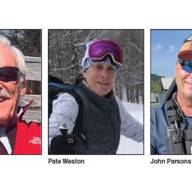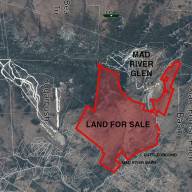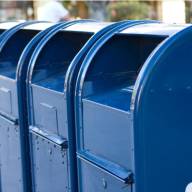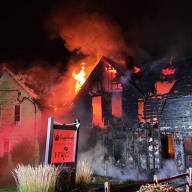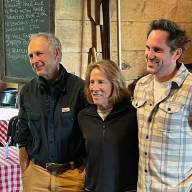By Claire Pomer, Harwood correspondent
Harwood has advanced to the third phase of the Samsung Solve for Tomorrow challenge. Solve for Tomorrow encourages students in grades 6-12 to use STEM (Science, Technology, Engineering, and Math) to solve a community problem. Angela Selvaggio, a Harwood Middle School science teacher, is leading a team of seventh graders creating a bus tracking app.
One of the largest obstacles of the contest is its timespan. The deadline for submissions was November 14, state finalists were announced early December, and state winners were announced in late January. State winners have until March 26 to submit their videos detailing their projects, and Selvaggio’s students say that this is what’s stressing them out the most.
‘NERVOUS AND EXCITED’
“I’m nervous and excited about the whole thing,” said Student 1. “We have very limited time, and since break is next week and we all have busy schedules, it can be hard to be fully involved in the process.” Selvaggio, as a teacher, knows this firsthand: scheduling meetings with their mentors can only happen during 40-minute increments throughout the week.
“Middle schoolers don’t really have that independence,” she said. “If this was made up of high schoolers, it’d be easier.” At least 19 of the state winners, including Harwood, are middle schools. But, as Selvaggio was saying, many teams are putting in time outside of school in order to meet the deadline. That’s much harder to do with middle schoolers: they can’t drive themselves and they’re usually incredibly busy. “We all want to be involved,” said Student 2, “but there are a lot of meetings where not all of us can be here.”
The process of building the app itself is also challenging. Students 3 and 4 were working on collecting addresses to begin building their database. The team had also presented their plan to district superintendent, Dr. Michael Leichliter, the district technology director, and the district bus director. During that meeting, they discovered that the bus company, First Student, already had an app -- something that came very close to their original vision -- titled FirstView. However, it’s not accessible to the entire district (it requires a code) and its mapping system is, as Student 1 put it, “currently a 34-page PDF.”
CLEARER EXPECTATIONS
This isn't a major setback, though; now they have clearer expectations of what they want their app to look like and how they want it to function, building off of FirstView’s Frequently Asked Questions page. Student 3, with the help of the district technology director, is building a spreadsheet of all current HUUSD bus stops. It’s organized by whether it’s a morning or afternoon stop, its corresponding bus number, its coordinates, and a link to its Google Earth page.
Selvaggio’s team isn't alone in their efforts. As state winners, they have access to a Samsung mentor. Harwood’s mentor is Donnette Noel, who works for a Samsung subsidiary in digital media and digital strategy. Alongside Noel, they also have access to specialized mentors to help guide them in the creation of their product. According to Selvaggio, Noel is currently trying to help the Harwood team find a Samsung coding specialist to turn their vision into reality.
The goal after break is to present a prototype by the deadline. Their app won’t be completely finished, since the bus director needs to reach out to a superior for help on extending the app to the district. Once they can do that, the team plans on finding no more than 20 test subjects.
“We want to test how accurate the ETA is, find dead spots, and just see how well it works,” said Student 4. If their app works, then Phase 2 of their plan would be to transfer its data to the school district website so that it’s available in website and app form.




